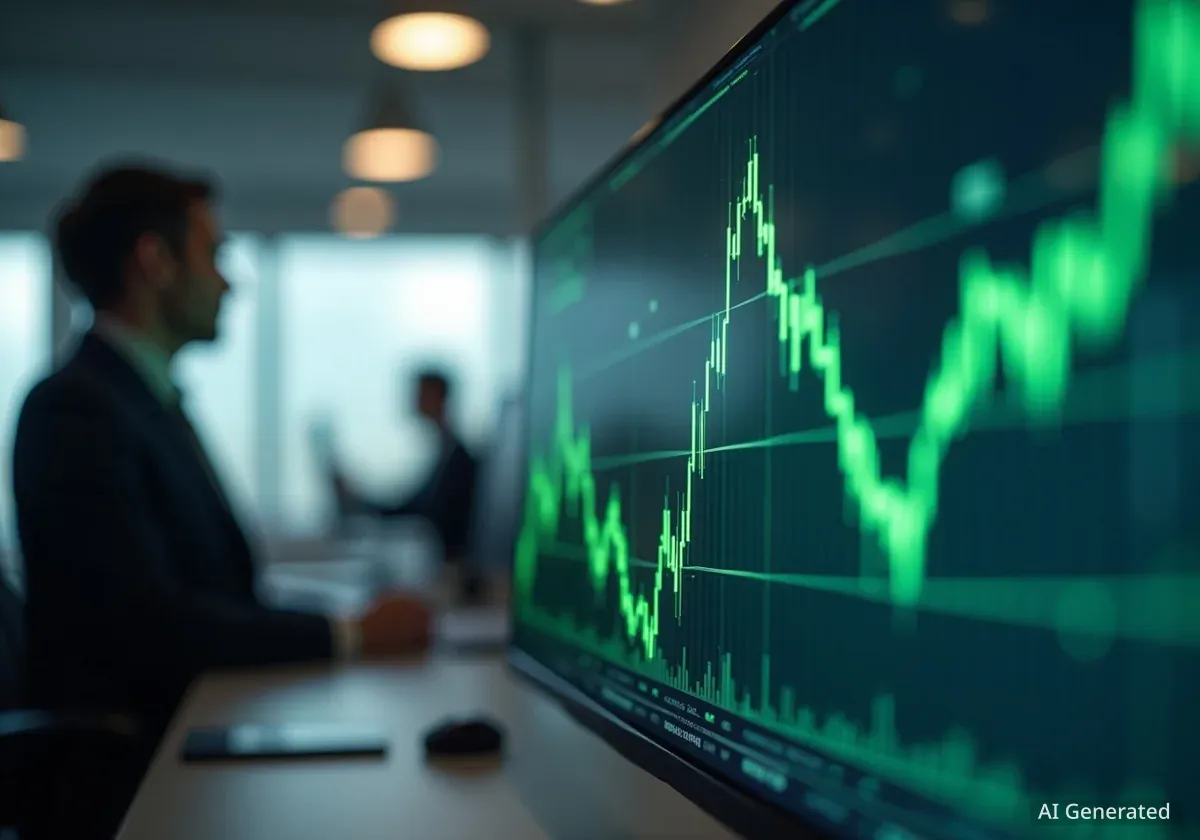A top strategist at Wells Fargo is advising investors to remain invested in artificial intelligence stocks, suggesting the potential for a market bubble in the sector should be viewed as an opportunity for significant gains. The firm recommends rotating out of cyclical stocks that have rallied on interest rate cut expectations and moving back into the AI sector.
Ohsung Kwon, Wells Fargo's chief equity strategist, stated that the market is currently shifting its focus from interest rate movements to company fundamentals, where AI firms currently lead. This strategy hinges on the continuation of strong capital expenditure in the AI industry.
Key Takeaways
- Wells Fargo's strategy team recommends staying invested in the AI trade and selling cyclical stocks that previously benefited from rate-cut speculation.
- The firm suggests focusing on AI "capex takers," such as semiconductor companies, which directly benefit from industry spending.
- While acknowledging signs of "froth," the strategist views the potential for an AI bubble as a "right tail risk" that investors should be exposed to for potential upside.
- The primary risk to this market outlook is a downturn in the AI capital expenditure cycle, though no signs of a slowdown are currently visible.
- A broader market rally beyond the narrow AI focus is seen as dependent on a recovery in the housing market, which requires lower interest rates.
Market Rotates from Rate Speculation to AI Fundamentals
According to Ohsung Kwon, the investment landscape is undergoing a significant transition. For months, market movements were heavily influenced by expectations surrounding Federal Reserve interest rate cuts, which boosted rate-sensitive cyclical stocks.
However, Kwon argues this phase is ending. "We’re essentially selling the news that we’re in an easing cycle. We’re rotating back into AI," he explained in a recent interview. The market's attention is now moving toward core business performance and earnings growth.
In this new environment, AI companies are positioned for continued leadership. "Fundamentally, the best companies in the world right now are AI companies," Kwon noted. This shift places a greater emphasis on companies that can demonstrate strong earnings and prove they can successfully monetize their AI technologies.
Historical Precedent: The Dot-Com Era
To provide context for the current AI boom, strategists often look back at the tech bubble of the late 1990s. In a note to clients, Kwon's team highlighted that the previous tech bubble endured several major financial crises before it collapsed, including the Asian financial crisis and the Russian ruble crisis. It also survived 175 basis points of rate hikes, showing that strong technological trends can be resilient for extended periods.
The 'Capex Taker' Investment Approach
Wells Fargo’s strategy is not to buy all AI-related stocks indiscriminately. Instead, the firm is focused on a specific segment of the market it calls "capex takers." These are companies that are the primary beneficiaries of the massive capital spending occurring in the AI sector.
Semiconductor manufacturers are the prime example. As tech giants invest billions in building out their AI infrastructure, chipmakers receive a direct flow of revenue. This makes their performance closely tied to the underlying growth of the entire AI ecosystem.
"I do think the AI capex cycle turning is probably the single biggest risk to the market right now," Kwon said, but quickly added, "we don’t see any sign of that turning."
To support this view, Wells Fargo analysis shows that current technology capital expenditure has not yet reached the peak levels seen in previous cycles, suggesting there is still room for growth. For semiconductor companies, continued AI investment is expected to drive strong performance as long as the spending trend holds.
Assessing the Risk of an AI Bubble
The rapid rise in AI stock valuations has led many investors to worry about a potential bubble. Kwon acknowledges these concerns, noting that there are signs of "froth" in the market. However, his perspective on this risk is unconventional.
He suggests that investors should not shy away from this possibility but rather embrace it as a potential source of extraordinary returns. "We don’t think it’s a bubble yet, but there’s a chance that AI becomes a bubble and you want to own the right tail risk of that," Kwon stated.
This concept of "right tail risk" refers to the small probability of an event causing an asset's value to increase dramatically. In this context, Wells Fargo is advising clients to be positioned to benefit if the current AI enthusiasm accelerates into a full-blown market bubble, similar to how the tech sector gained 61% in the six months before its 2000 peak, as noted by Bank of America strategists.
Household Stock Allocation at Record Highs
According to recent Federal Reserve data analyzed by Ned Davis Research, U.S. households held a record-high allocation of 50.5% of their total financial assets in stocks at the end of the second quarter. Historically, such high levels of equity ownership have been associated with lower long-term returns over the following decade.
Broader Market Recovery Hinges on Housing
While the AI sector continues to dominate, Kwon believes a broader, more inclusive market rally depends on the health of other parts of the economy, particularly the housing market. The current market is described as "narrow," with a small number of tech stocks driving most of the gains.
For the rally to expand to other sectors, such as manufacturing, housing activity must improve first. "Unless the housing market starts to improve, I don’t think the manufacturing cycle is really going to turn," Kwon explained.
A housing recovery is directly tied to interest rates. "If housing were to recover, then I think things are going to broaden out. For that to happen, we need rates to be lower," he said. The strategist emphasized that his focus is more on housing activity—such as sales and construction—than on prices, and recent data has been largely negative.
Beyond AI, Kwon also sees a potential recovery in capital markets, specifically in merger-and-acquisition (M&A) and initial public offering (IPO) activity. An increase in such deals would likely benefit investment banks, representing another area of potential growth outside the immediate AI trade.





